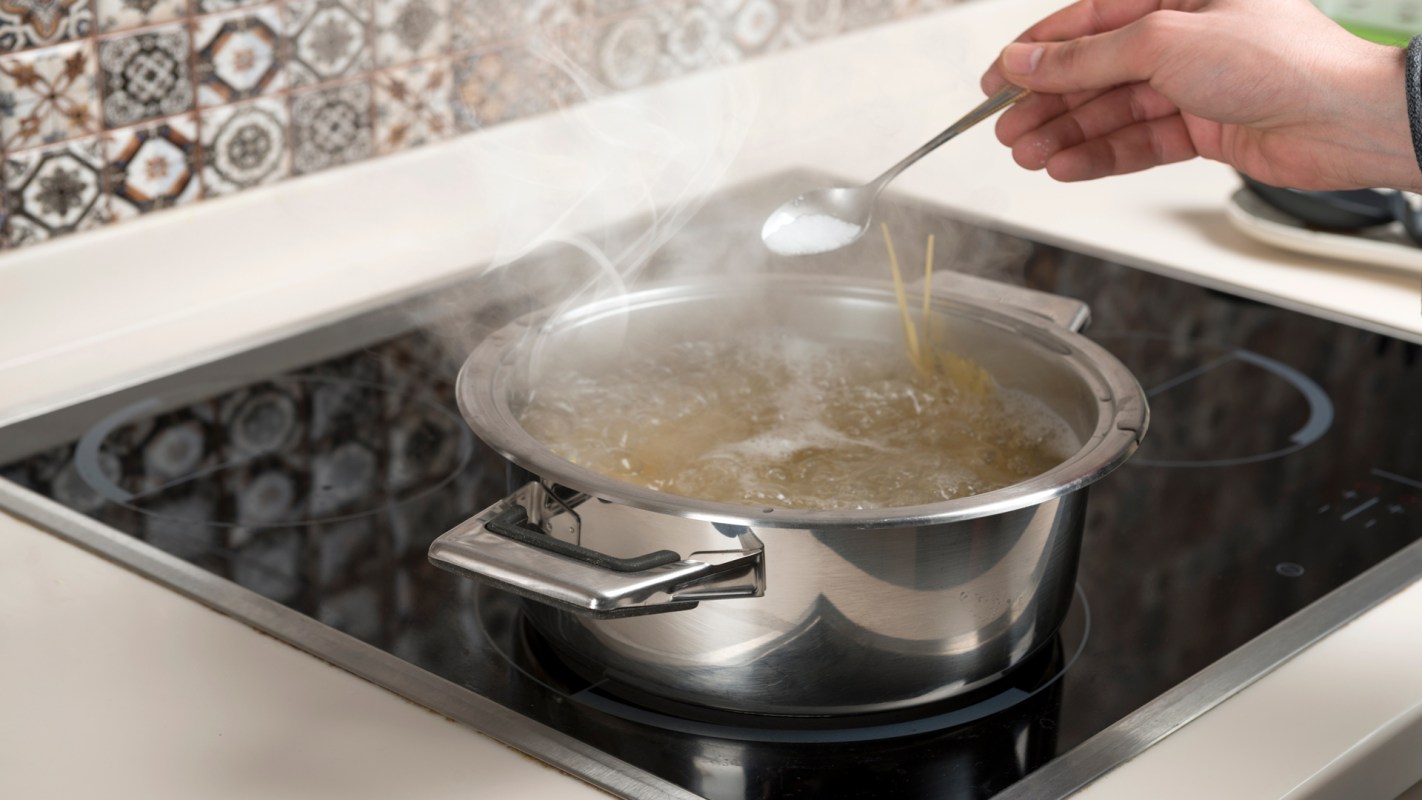When it comes to hidden dangers lurking in your home, you might imagine the main culprit lies within a rickety attic, slippery bathroom, or tool shed full of pointy objects. But a recent report has shown that one of the most-used kitchen appliances can pose a major health risk to you and your family.
A study found that gas stoves can leak toxic gases that have been linked to serious diseases. One particular toxin of concern released by gas stoves is benzene, which is also found in cigarette smoke, according to the CDC. As many of us rely on gas stoves for everyday cooking, this certainly isn't the best news.
Thankfully, there are alternatives.
Consider the incredibly efficient induction stove. Here's how they work.
What is an induction stove?
An induction stove is a type of stove that cooks food using magnetism between the cook surface and cookware.
How does an induction stove work?
Induction stoves use copper plates beneath a ceramic cooktop to create a magnetic current that flows to the cookware placed on the stove. This current moving through the pot or pan generates heat, which cooks the food. This means the cookware is the only thing that gets hot (that and the food).
Kitchen items like paper towels, rags, or non-metal utensils are safe from burning or melting on an induction stovetop. Hands are safe, too!
How do induction stoves compare to traditional stoves like electric and gas?
Though similar, induction stoves differ from traditional electric stoves that use metal coils, electrical currents, and conduction to cook.
Pros
Time Savings
Induction stoves are more efficient because they can produce rapid temperature changes. Induction stovetops can boil water up to 50% faster than traditional cooktops.
Heat in traditional electric stoves is pushed in between more materials, which creates more opportunities for temperature loss, slowing the cooking process.Easy Cleaning
Like flat electric stoves, induction stoves are easy to clean, but not only because of a flat cooktop surface. As noted, an induction stove's cooktop is not the thing that gets hot, so when food falls or splashes onto its surface, the food doesn't get cooked on as it does with electric stoves.
Temperature Control
The magnetism between an induction stove and magnetic cookware is constant as long as they are in contact. So while induction stoves can match the high-powered, rapid changes in temperatures of gas stoves, they also provide more precise temperature control, thus avoiding under- or overcooking.
Removing the cookware instantly lowers its temperature and that of the stovetop. The stove will stay warm because heat from the cookware has radiated back to the cooktop.Even Cooking
The technology of induction stoves allows you to cook without the "cold spots" that result from the uneven distribution of heat, even on larger cookware like griddles.
No Kitchen Heat
Less heat gets lost around the pan because the cookware is the only thing that gets heated. Unlike traditional stoves, induction stoves save energy and prevent your kitchen from heating up.
You can even cook with the breeze of a fan or open window, unlike methane gas stoves where a breeze affects the flame.Better Air Quality
Induction stoves do not release hazardous pollutants like methane and benzene into your home like gas stoves do.
Cons
Not All Cookware is Compatible
Induction stoves are most compatible with cookware that has a high iron content (use the magnet test) and a flat, even bottom.
Interferes with Pacemakers
People with pacemakers and other implanted cardiac devices should use great care when using or near an induction stove, as induction technologies may interfere with these devices.
Higher Cost
Induction stoves, on average, cost more than electric stoves (but less than methane gas stoves) — though that can be offset by up to $840 through the Inflation Reduction Act. But you don't have to commit to an entirely new stove to try induction cooking. There are many induction hot plates on the market for under $50.
With reduced cooking times, precise temperature control, lower risk of burns or fires, and less pollution, induction stoves provide an all-around better cooking experience than traditional stoves.
Join our free newsletter for easy tips to save more, waste less, and help yourself while helping the planet.









